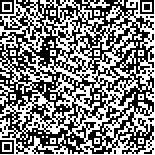Archive > Volume 44 Issue 10 > 2018,44(10):1245-1254. DOI:10.7519/j.issn.1000-0526.2018.10.001 Prev Next
Application Analysis of Himawari8 in Monitoring Heavy Rain Convective Clouds
- Article
- Figures
- Metrics
- Preview PDF
- Reference
- Related
- Cited by
- Materials
Abstract:
High resolution data of Himawari8 (H8 for short) have been used in China since 2016, and forecasters have been concerning for its superiority in monitoring convective clouds because heavy and extreme rain processes occurred frequently in 2016. In the current forecasting operation, the delay time of acquiring H8, FY2 and radar data are 15 min, 35 min and 6 min, respectively. In this article, the H8 infrared data and surface precipitation are used to analyze the initiation of each target convective clouds of 27 heavy rain processes in the 2016 flood season. By comparing with FY2 satellite and radar observations, we conclude that the observation data of H8 and FY2 at the same moment have little difference, and their time variation trends are almost the same. However, H8 depicts convection strength more detailedly due to its higher resolution, and it has obvious superiority in monitoring heavy rain convective clouds. It can find the initiation convective clouds 23 min earlier than FY2 averagely, and 33 min earlier than radar. Combined with hourly and 10 min precipitation data, the 20 July 2016 extreme heavy rain event in North China is analyzed in detail. It is found that there is a remarkable negative correlation between temperature of brightness blackbody (TBB) and surface precipitation, and the amplitude of precipitation varies much larger than TBB. When the peak of TBB moves towards the colder side, the corresponding precipitation magnitude increases, and the type of precipitation turns to coldcloud precipitation gradually.
Keywords:
Project Supported:
Clc Number:


Mobile website









